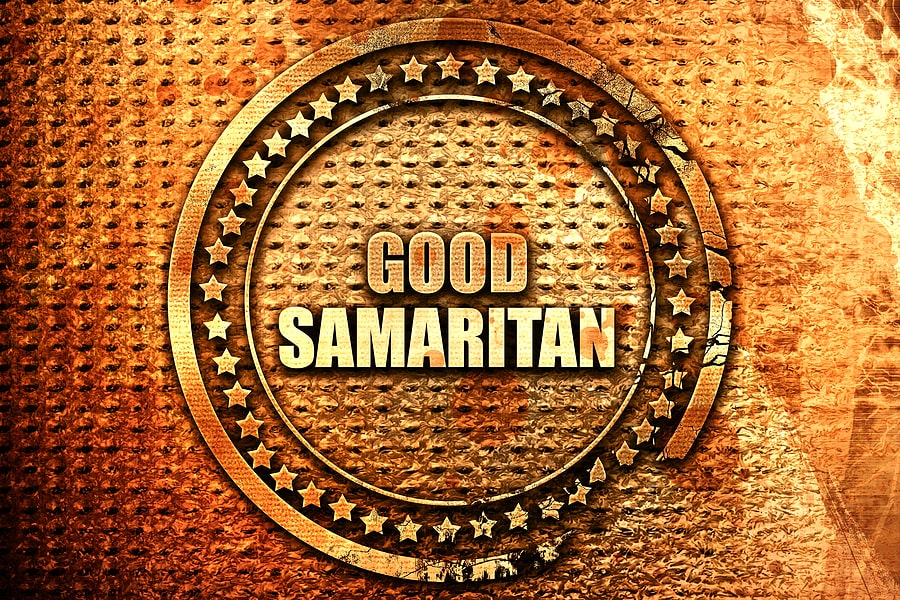Bystanders in films and television shows often rush to the aid of someone in need of emergency medical care. This may seem like the ethical choice. However, certain laws come into play in this situation.
All 50 states and the District of Columbia have a version of Good Samaritan laws. The name comes from the parable of the Good Samaritan. The rules dictate who needs to provide help to victims, and whether the person who provides aid is subject to a lawsuit if they do something that injures the victim further.
Everyone should become familiar with the rules in their state. Many people want to do something in the case of an accident but may fear what would happen if they make matters worse. The fear may dissipate once they understand some facts about Good Samaritan laws.
Good Samaritan Laws Protect Bystanders
Good Samaritan laws provide limited legal protection to a person who gives reasonable assistance to someone else in distress. When a fellow citizen is ill, injured, or incapacitated, often others don’t know what to do and may end up doing nothing. This response is normal, especially if a person is not sure what to do or fears legal trouble if they get involved.
The purpose of Good Samaritan laws is to lessen a bystander’s hesitation to take action—indeed, to encourage it. The specific rules vary from state to state as to who may be liable and under what circumstances, whether the helper needs to obtain consent from the victim, and parental rights in emergencies.
What Are the Four Common Components of Good Samaritan Laws?
While Good Samaritan laws are different between jurisdictions, most of them share three common elements.
They are that the helper is protected from liability if:
- They obtain the permission of an ill or injured victim to render aid, when possible.
- They provide care in an appropriate and non-reckless manner.
- They provide care due to the situation being an emergency, and trained help has not arrived yet.
Are Bystanders Legally Obligated to Help Another Person in an Emergency?
A common feature among Good Samaritan laws is the duty to assist. In most states, the rules do not obligate any nearby person to help the victim. However, someone usually must help if they have an existing relationship with the victim.
Examples include:
- A parent and child;
- Spouses;
- An employer and employee;
- Invited guests on private property; and
- A caretaker and patient.
Additionally, if a person caused an accident they are generally required to render aid, even if they do not know or have a preexisting relationship with the victim. Aid can be calling the police or administering CPR.
In some places, a bystander may receive a fine for failing to assist in one of these situations. Fines vary based on state law.
Are There Exceptions to Good Samaritan Laws?
As with most laws, many Good Samaritan laws include exceptions. A person who is negligent or makes an unreasonable mistake while they render aid is not protected from liability, for example.
Generally, Good Samaritan laws do not extend protection to doctors, nurses, paramedics, and other rescue officials while they are on duty. A doctor has a separate legal obligation to provide competent care to their patients. However, a health care provider or rescue worker can receive protection if they are not on the clock when they render aid in an emergency.
The law also does not generally protect people who help in hopes of receiving a reward, such as money or fame.
Another exception in many states is a lack of consent. If someone makes it clear they do not want help, a bystander should not try to provide aid. Parents usually must give permission if the victim is a minor. However, this likely will not apply if a bystander helps an unconscious or intoxicated stranger.
In some states, the law only protects individuals with certified first aid training, and does not cover untrained people who attempt to render aid.
Too Dangerous to Support
Some Good Samaritan laws require anyone at the scene of the accident to assist. However, in these states, if a bystander reasonably believes that rendering aid will put them in danger, they are not obligated to do so.
This can include a risk of infection. If the victim is bleeding from the mouth, for example, a bystander does not have to perform CPR. Sometimes, the environment is not safe for the rescuer to navigate. Unless the bystander is trained as a firefighter, entering a burning building is very risky. If the bystander cannot swim, they are not responsible for aiding someone who is drowning. If a bystander has certain physical or mental disabilities, then the law may not require them to assist a victim in any situation.
In any of these situations, a bystander should ensure they are safe and call for help.
What Happens if the Helper Injures the Victim Further?
Sometimes, a bystander causes further injuries when they are trying to help a victim. Often, Good Samaritan laws do not allow the injured person to sue the rescuer in this situation, especially if they faced an immediate threat.

If a bystander’s attempts to help cause additional accidental injury, the law generally protects them from liability if:
- The bystander acted in good faith;
- They made reasonable decisions;
- The victim was in imminent danger;
- The victim did not object to their assistance; and
- They did not purposely or knowingly injure the victim further.
If there was no imminent danger, a judge might find that the bystander’s actions were reckless. The victim can then sue for damages. A state’s Good Samaritan laws often make this process complex.
If you were the helper or the victim in a situation like this, you will likely need the assistance of an experienced attorney to determine your options.


